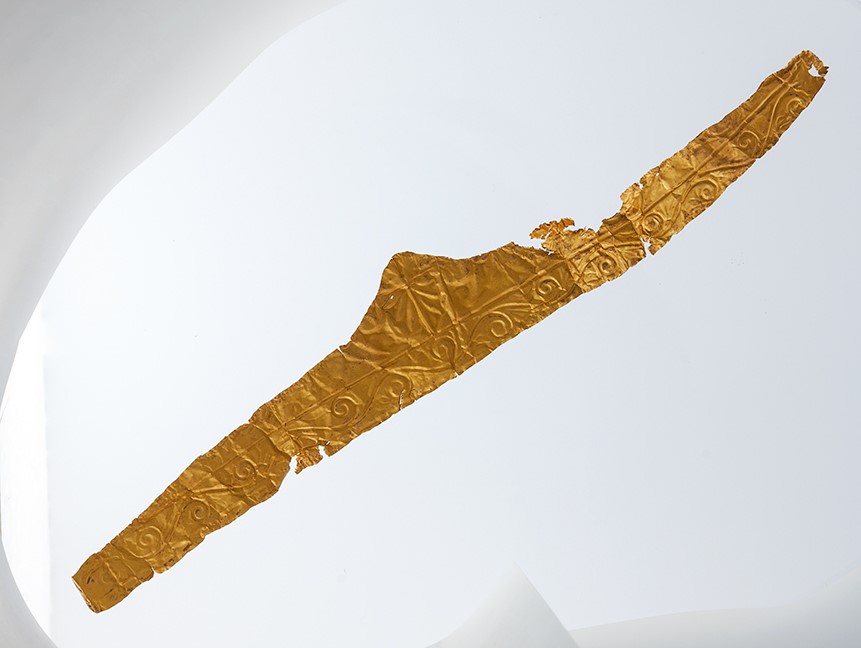Acquisition number: 1971.11
Slightly damaged in places. The diadem consists of a band of thin sheet gold with rounded ends and rising to a peak in the centre. There are tie-holes at each end. It bears repoussé decoration. The main decorative band comprises a scroll pattern between lines; above, in the apex, is an inverted palmette.
Title: Gold Diadem - 1971.11
Acquisition number: 1971.11
Author or editor: J.R. Green
Culture or period: Hellenistic.
Date: c. 3rd century BC.
Material: Metal - Gold
Object type: Jewellery
Dimensions: 186mm (l) × 27mm (h)
Origin region or location: Greece
Display case or on loan: 4
Keywords: Greek, Hellenistic, diadem, Aphrodite
Charles Ede Ltd (London), Catalogue 83 (October 1971) no. 39; J.R. Green with B. Rawson, Catalogue of Antiquities in the Australian National University, A.N.U. (Canberra, 1981) 103; E. Bollen et al., Beauty & Betrayal. Ancient and Neo-Classical Jewellery (exhib. cat., Nicholson Museum, Sydney 2010) 32-33 no. 19 (colour ill.).
1971.11
Gold Diadem
Purchased. Max. ht 2.7cm; length 18.6cm.
Slightly damaged in places. The diadem consists of a band of thin sheet gold with rounded ends and rising to a peak in the centre. There are tie-holes at each end. It bears repoussé decoration. The main decorative band comprises a scroll pattern between lines; above, in the apex, is an inverted palmette.
Diadems such as this, clearly impractical for everyday use, were tied about the heads of deceased women and interred with them as part of their funerary adornment. While found in most areas of the Greek world, recent excavations seem to show that they were particularly popular in northern Greece and belong to the Early Hellenistic period.
For more ambitious examples, see H. Hoffmann and P. Davidson, Greek Gold: Jewellery from the Age of Alexander (Mainz 1965) 67-68 no. 7; A. Greifenhagen, Schmuckarbeiten in Edelmetall (Berlin 1971-5) II pl. 3, 1-5; D. Williams and J. Ogden, Greek Gold: Jewellery of the Classical World (London 1994) 92-3, 108-9, 234-5.
Compare the diadem worn by the bronze figurine of Aphrodite, 2005.02 in the ANU collection.
Charles Ede Ltd (London), Catalogue 83 (October 1971) no. 39; J.R. Green with B. Rawson, Catalogue of Antiquities in the Australian National University, A.N.U. (Canberra, 1981) 103; E. Bollen et al., Beauty & Betrayal. Ancient and Neo-Classical Jewellery (exhib. cat., Nicholson Museum, Sydney 2010) 32-33 no. 19 (colour ill.).
